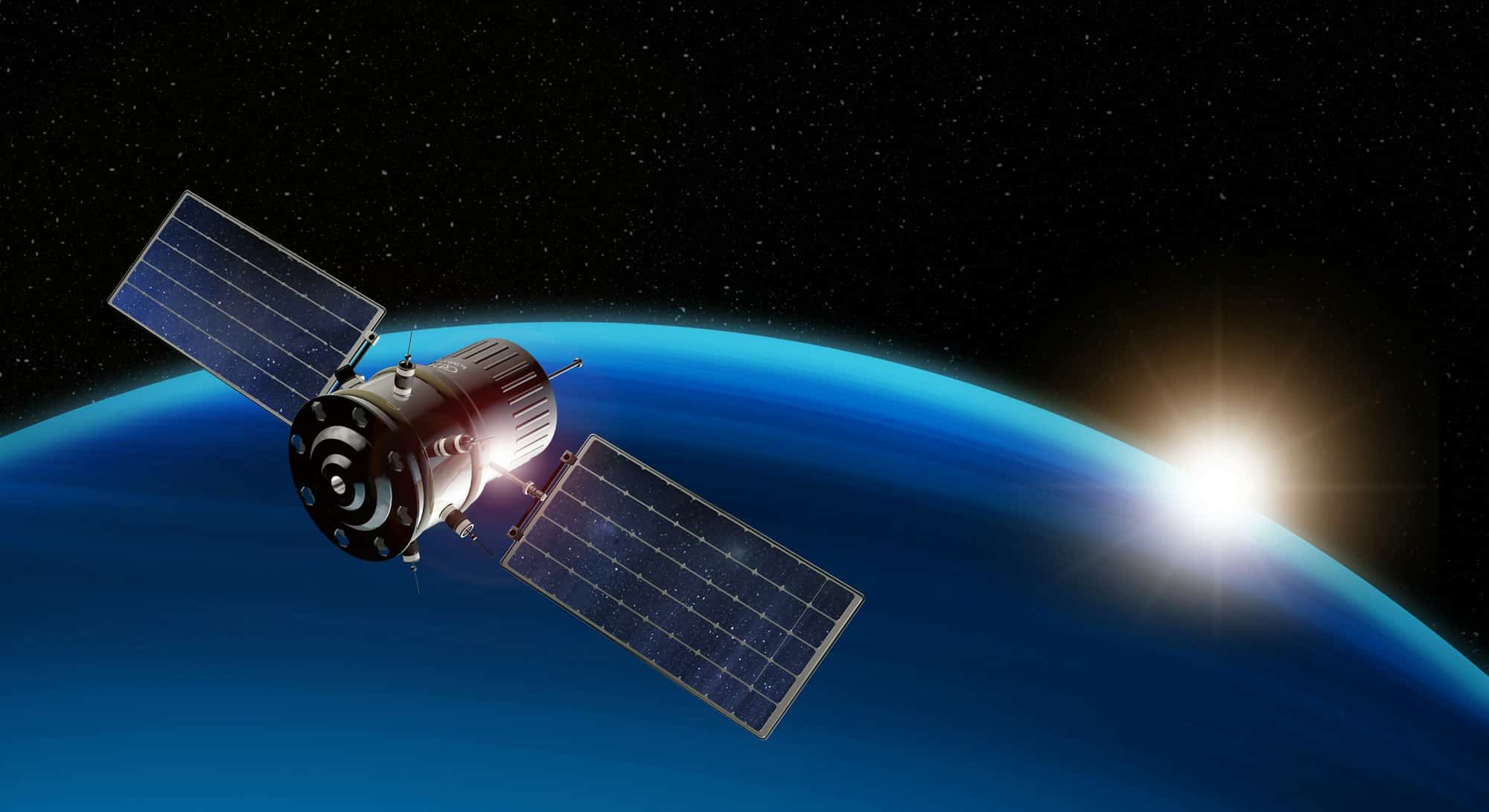As you navigate the constantly evolving realm of technological innovation, you may find yourself drawn to the field of satellite communication systems. This sphere has seen an incredible surge in developments, particularly in high-bandwidth, low-latency systems. These advancements have revolutionized global communications and connectivity, enabling faster, more efficient transmission of data across the world. Notably, the advent of Low Earth Orbit (LEO) satellites has sparked a new era in the world of communications. But what exactly are these systems, and how do they function? Let’s delve into it.
The Emergence of LEO Satellites
When you hear the term ‘satellite,’ you might picture a sleek piece of technology hovering somewhere deep in space. However, this imagery pertains to geostationary satellites, which exist at an altitude of 36,000 km above the earth’s surface. In stark contrast, LEO satellites operate at a much lower orbit, between 500 to 2,000 km. This proximity to earth significantly reduces latency or the delay before the transfer of data begins following an instruction for its transfer.
A lire en complément : How Is AI Enabling More Accurate and Timely Flood Prediction Models?
So why is latency such a crucial factor in satellite communication systems? Well, for real-time applications like video calls, gaming, or stock trading, a high latency can severely hinder functionality. LEO satellites offer a promising solution for these applications by providing low-latency connectivity.
The Role of Major Players: SpaceX’s Starlink and Amazon’s Project Kuiper
When discussing LEO satellites, it is impossible not to mention the efforts of two industry giants: SpaceX and Amazon. Both companies have distinct satellite projects underway – SpaceX with its Starlink network and Amazon’s Project Kuiper, aiming to provide high-speed, low-latency internet connectivity across the globe.
A voir aussi : How Is AI Being Used to Predict Equipment Failures in the Energy Sector?
SpaceX’s Starlink network aims to establish a constellation of 12,000 LEO satellites. The goal is to deliver high-speed internet access to every corner of the globe, even areas where connectivity is currently nonexistent or unreliable. As of now, Starlink has successfully launched a significant number of these satellites and begun initial service in select areas, showing promising initial results.
On the other hand, Amazon’s Project Kuiper has also gained significant attention. Although it is still in the early stages of development, Amazon plans to launch 3,236 LEO satellites to provide similar high-speed, low-latency internet service. It’s an ambitious project that, if successful, could substantially alter the landscape of global internet connectivity.
The Advantages and Challenges of LEO Satellite Systems
The advantages of LEO satellite systems are manifold. As mentioned earlier, their proximity to earth allows for low-latency communications, essential for real-time applications. They also offer global coverage, capable of reaching remote or rural areas where traditional broadband services may not reach. This coverage could bridge the digital divide and democratize internet access worldwide.
However, deploying a network of LEO satellites is not without its challenges. The sheer number of satellites required to provide global coverage is immense, leading to a high cost. Furthermore, these satellites have a much shorter lifespan than their geostationary counterparts, necessitating more frequent launches and higher maintenance costs.
Another significant challenge is the potential for space debris. With so many satellites in orbit, the risk of collisions increases, which could lead to an exponential growth in orbital debris. This issue, known as the Kessler Syndrome, could make space operations and satellite deployment extremely difficult in the future.
The Future of High-Bandwidth, Low-Latency Satellite Communication
Despite the challenges, the future of high-bandwidth, low-latency satellite communication looks promising. With major players like SpaceX and Amazon investing heavily in LEO satellite systems, we can expect significant advancements in this field in the coming years.
As technology evolves, so too will the methods for managing and mitigating the challenges associated with these systems. Increased collaboration between companies, regulatory bodies, and international agencies will be crucial in shaping a sustainable and inclusive future for satellite communication.
In essence, high-bandwidth, low-latency satellite communication systems, particularly those utilizing LEO satellites, represent a revolution in global connectivity. As technological advancements continue to propel this industry forward, we may soon see a world where high-speed, low-latency internet access is not a luxury, but a standard accessible to all.
Regulatory and Policy Aspects of LEO Satellite Systems
Regulatory bodies play a pivotal role in the deployment and management of satellite constellations in low earth orbit. In this context, a key concern is the equitable and sustainable use of outer space. Regulatory entities including national space agencies and international organizations such as the International Telecommunication Union (ITU) and the United Nations Office for Outer Space Affairs (UNOOSA) are responsible for overseeing these issues.
One of the primary aspects that regulatory bodies must address is spectrum allocation. With a multitude of services vying for the same radio frequencies, including terrestrial wireless networks, it becomes crucial to manage spectrum use effectively to prevent interference. In this regard, the ITU plays a pivotal role, coordinating global radio spectrum to ensure seamless, interference-free satellite internet connectivity.
Space debris, as discussed earlier, is another critical issue. Policy measures are needed to mitigate the risk of collisions and to ensure the long-term sustainability of space activities. These measures could include regulations for deorbiting defunct satellites and better tracking of orbital debris. International cooperation is paramount in this respect as space debris is a global issue affecting all satellite operators.
The regulatory landscape, therefore, must evolve in tandem with technological advancements in satellite communications. It must strike a balance between fostering innovation and ensuring the sustainable use of the low earth orbit.
Telesat Lightspeed: A Promising Contender in the LEO Satellite Race
With SpaceX’s Starlink and Amazon’s Project Kuiper often stealing the limelight, it’s easy to overlook other promising entities in the LEO satellite arena. One such player is Canadian telecommunications company Telesat, with its high throughput LEO constellation project, Telesat Lightspeed.
Telesat Lightspeed aims to build a network of 298 LEO satellites, significantly less than the large LEO constellations planned by SpaceX and Amazon. However, the company plans to augment its LEO satellites with geostationary satellites, offering a hybrid architecture that could potentially provide higher data rates and lower latency.
Telesat’s strategy also focuses on providing satellite-based services to enterprise customers, including governments and large corporations. This approach differs significantly from SpaceX and Amazon, which aim to provide direct-to-consumer internet services. By focusing on enterprise customers, Telesat can potentially offer tailored, high-value services that cater to specific needs.
In February 2024, Telesat reported a successful test of its Lightspeed satellites, demonstrating high-speed, low-latency communication capabilities. Moving forward, the company aims to start commercial service in 2025, marking a significant step in the evolution of satellite communications.
Conclusion: The Dawn of a New Era in Satellite Communications
In the world of satellite communications, we are witnessing the beginning of a revolution. Projects like Starlink, Project Kuiper, and Telesat Lightspeed are pushing the boundaries of what’s possible, bringing us ever closer to a future where high-speed, low-latency internet access is universally accessible.
These LEO satellite constellations hold great promise, but they also bring with them significant challenges. From the high cost of launching and maintaining a large number of satellites to the potential for increased space debris, these issues must be addressed to ensure a sustainable future for satellite communications.
Regulatory bodies play a crucial role in this regard, overseeing spectrum allocation, debris mitigation, and the equitable use of outer space. International collaboration will be key to addressing these issues and fostering a regulatory environment that supports innovation while ensuring sustainability.
As we look to the future, the potential of high-bandwidth, low-latency satellite communication systems is clear. These systems, particularly those utilizing LEO satellites, could democratize internet access, bridging the digital divide and transforming how we communicate. As we stand on the brink of this new era, one thing is certain: the world of satellite communications will never be the same again.











